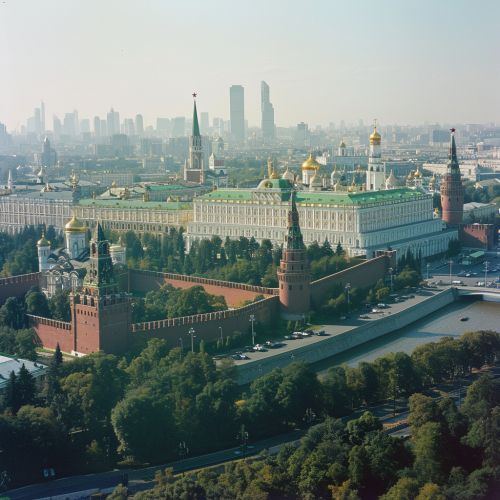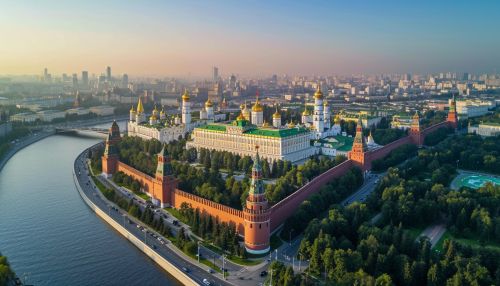Dissolution of the Soviet Union
Background
The Union of Soviet Socialist Republics (USSR) was a federal socialist state in Northern Eurasia that existed from 1922 to 1991. It was a state controlled by the Communist Party with Moscow as its capital in its largest republic, the Russian SFSR. Other major urban centers were Leningrad, Kiev, Minsk, Tashkent, Alma-Ata, and Novosibirsk. It was the largest country in the world by surface area, spanning over a tenth of the Earth's total land area, and was the third most populous, with over 288 million people as of 1989.


Prelude to Dissolution
The dissolution of the Soviet Union was a process of systemic disintegration within the political, economic and social structures of the USSR, which began in the second half of the 1980s and ended on December 26, 1991, when the USSR itself was voted out of existence by the Supreme Soviet, following the Belavezha Accords.
The process was characterized by many of the republics of the USSR declaring their independence and being recognized as sovereign nation-states by the international community. The Baltic States, in particular, had always maintained that their incorporation into the Soviet Union was illegal, and they were recognized as independent states by a number of countries before the dissolution of the USSR.
Economic Factors
The Soviet economy was the modern world's first centrally planned economy. It was based on a system of state ownership of industry managed through Gosplan (the State Planning Commission), Gossnab (State Commission for Materials and Equipment Supply), and the Gosbank (State Bank). Economic policy was made according to directives from the Communist Party, which controlled all aspects of economic activity.
By the 1970s and 1980s, the Soviet Union had entered a period of economic stagnation, and was unable to introduce new technology at the rate of the capitalist West. The economy, which had previously seen high growth rates, started to stagnate, and the USSR was unable to keep up with the technological advances of the West.
Political Factors
The political structure of the USSR was defined by its constitution, which was promulgated in 1924, 1936 and 1977. The supreme power rested with the Soviet of the Union and Soviet of Nationalities, which elected the Presidium and appointed the Supreme Court. The Communist Party held all the power, and controlled the state apparatus.
The political factors that led to the dissolution of the USSR include the policies of Glasnost (openness) and Perestroika (restructuring) introduced by Mikhail Gorbachev. These policies led to a wave of national unrest, which eventually led to the dissolution of the USSR.
National Unrest and Independence Movements
The 1980s saw a surge in nationalist sentiment among the various ethnic groups within the USSR. This was particularly evident in the Baltic republics of Estonia, Latvia, and Lithuania, which had been annexed by the USSR during World War II. The independence movements in these republics were among the first signs of the eventual dissolution of the USSR.
The Role of Mikhail Gorbachev
Mikhail Gorbachev was elected General Secretary of the Communist Party of the Soviet Union in 1985. He introduced significant reforms in an attempt to modernize the Soviet economy and prevent its collapse. His policies of Glasnost and Perestroika, however, led to a wave of national unrest.
The Final Years and Official Dissolution
In the late 1980s and early 1990s, support for the Soviet regime was waning, and many republics declared their independence. The coup attempt in August 1991 by hard-liners against Gorbachev sealed the fate of the Soviet Union. The coup failed, but it irreparably damaged Gorbachev's authority as president. On December 25, 1991, Gorbachev resigned as president of the USSR, declaring the office extinct. The following day, the Supreme Soviet dissolved the USSR, marking the end of the world's first socialist state.
Aftermath and Legacy
The dissolution of the Soviet Union marked the end of the Cold War and left the United States as the sole superpower. The post-Soviet states emerged from the dissolution of the USSR. The transition from a centrally planned economy to a market economy proved difficult and resulted in declines in standards of living in the post-Soviet states including a rapid increase in poverty, crime, corruption, unemployment, homelessness, rates of disease, and income inequality.
